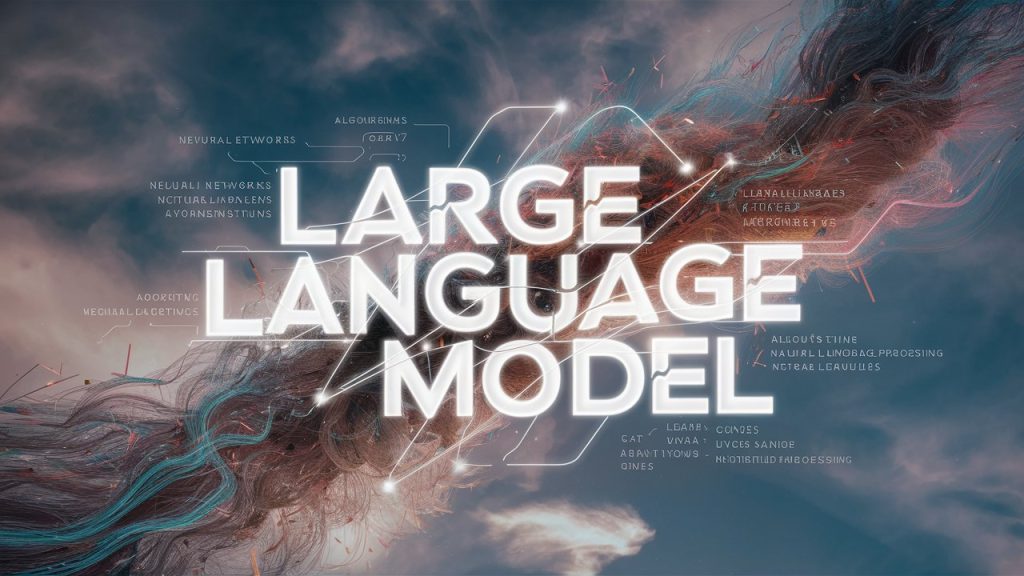Large Language Models (LLMs) are advanced artificial intelligence systems designed to understand, generate, and manipulate human language in a highly sophisticated manner. These models are trained on vast datasets comprising text from books, articles, websites, and other text sources to predict and generate coherent language.
How LLMs Work
LLMs operate based on neural networks, specifically transformer architectures, which enable them to handle complex language tasks. They learn patterns, context, and semantic relationships within the text, allowing them to perform tasks such as translation, summarization, question-answering, and even creative writing.
Key Features of LLMs
- Contextual Understanding: LLMs can grasp the context of a conversation or text passage, enabling more accurate and relevant responses.
- Language Generation: They can generate human-like text, making them useful for creating content, drafting emails, and more.
- Multimodal Capabilities: Recent advancements have integrated the ability to process and generate not just text but also images, voice, and video inputs.
Evolution of Multimodal Capabilities
The evolution of LLMs into multimodal systems represents a significant leap in AI capabilities. This development allows LLMs to process multiple types of data simultaneously, such as text, images, and audio, enhancing their ability to understand and respond to complex queries.
From Text to Multimodal: A Historical Perspective
The journey from text-only models to multimodal capabilities began with the introduction of transformer models like BERT and GPT-2, which showcased the potential of deep learning in understanding and generating human language. However, the real breakthrough came with the development of models like GPT-3 and GPT-4, which significantly expanded the scope of LLMs by integrating various data types.
Integration of Image Processing
One of the first significant steps in multimodal evolution was the ability to process and generate images. Models like DALL-E and CLIP, developed by OpenAI, demonstrated that LLMs could generate high-quality images from textual descriptions and understand images in the context of textual information.

For instance, DALL-E can create images from textual descriptions, while CLIP can understand images and associate them with relevant text. This integration allows LLMs to provide more accurate and contextually rich responses by considering both visual and textual information.

Voice and Audio Capabilities

The next step in the multimodal evolution was incorporating voice and audio processing. Models like OpenAI’s Whisper and Google’s WaveNet demonstrated the ability to generate and understand human speech. This advancement enabled LLMs to engage in spoken conversations, transcribe audio, and even generate realistic voice outputs.
Integrating voice capabilities allows LLMs to cater to users who prefer or require auditory interactions, enhancing accessibility and user experience. For example, ChatGPT can now engage in voice conversations, making interactions more natural and intuitive.
Video Integration

The most recent and advanced stage in the evolution of multimodal LLMs is the integration of video processing. This capability allows LLMs to understand and generate responses based on video inputs.
Although still in its early stages, video integration promises to revolutionize fields like entertainment, education, and customer service by enabling more dynamic and interactive content creation.
Impact of Multimodal Capabilities
The integration of multimodal capabilities in LLMs has profound implications across various industries:
- Customer Support: Enhanced by the ability to understand and respond to both text and images, leading to more accurate and helpful interactions.
- Healthcare: Improved diagnostic accuracy by analyzing medical texts and images together.
- Education: Enabling more interactive and engaging learning experiences.
- Content Creation: Generating richer and more dynamic content by combining text, images, and audio.
ChatGPT: A Case Study
ChatGPT is a prime example of how LLMs have evolved over time. Initially designed as a text-based AI, ChatGPT has incorporated multimodal capabilities, allowing it to handle text, images, and even voice and video inputs.
This integration enhances its conversational abilities, making interactions more natural and context-aware.
Multimodal Capabilities
One of the most exciting developments in LLMs is their transition to multimodal capabilities, which enable them to process and generate not just text but also other forms of data such as images, audio, and video.
Multimodal Features in ChatGPT
- Image Prompts: Users can input images, and ChatGPT can analyze and respond based on visual information.
- Voice Integration: ChatGPT supports spoken conversations, improving accessibility and making interactions more intuitive.
- Video Prompt Integration: Users can input video clips, enabling ChatGPT to provide responses that incorporate both visual and auditory information.
Claude AI: Another Player in the Field
Claude AI is another notable LLM that has embraced multimodal capabilities. Designed to compete with ChatGPT, Claude AI offers similar features, including text generation, image analysis, and voice interaction. These capabilities allow Claude AI to be used in diverse applications, from customer service to content creation.
Gemini: Pushing the Boundaries
Gemini represents the next step in the evolution of LLMs. With advanced multimodal integration, Gemini can process and generate responses based on a combination of text, images, and audio inputs. This capability makes it highly versatile and useful across various industries, including healthcare, education, and entertainment.
Gemini’s Performance and Criticisms
Google DeepMind’s Gemini has made headlines for its advanced capabilities, but it has also attracted criticism.
During its product launches, Gemini has been found to produce edited and potentially misleading videos, raising concerns about the model’s reliability and the transparency of its outputs. These issues underscore the importance of rigorous testing and validation in AI development to maintain trust and credibility.
Anthropic’s Safety-First Approach
Anthropic, the creator of Claude, has distinguished itself with a rigorous safety-first approach to AI development. This strategy involves several key components:
- Constitutional AI: A unique framework that guides AI behavior based on predefined principles of helpfulness, harmlessness, and honesty.
- Ethical Considerations: Continuous research and development efforts focus on minimizing biases and preventing misuse.
- Transparency and Oversight: Anthropic employs a “Long-Term Benefit Trust” to ensure that its AI development is guided by ethical considerations rather than purely commercial interests.
Applications and Impact
The integration of multimodal capabilities in LLMs like ChatGPT, Claude, and Gemini has wide-ranging implications:
- Customer Support: Enhanced by the ability to understand and respond to both text and images, leading to more accurate and helpful interactions.
- Healthcare: Improved diagnostic accuracy by analyzing medical texts and images together.
- Education: Enabling more interactive and engaging learning experiences.
- Content Creation: Generating richer and more dynamic content by combining text, images, and audio.
Conclusion
Large Language Models have come a long way from their initial text-only capabilities. The integration of multimodal features has transformed them into powerful tools capable of understanding and generating responses based on various types of data. As LLMs like ChatGPT, Claude, and Gemini continue to evolve, their impact on industries and everyday life will only grow, making them indispensable tools for the future.






